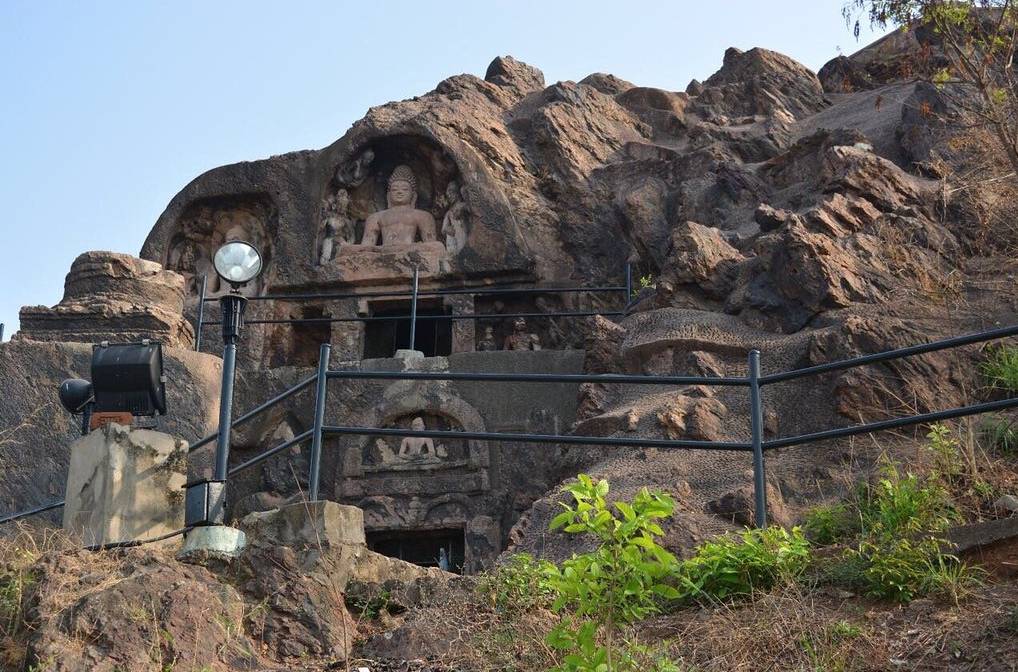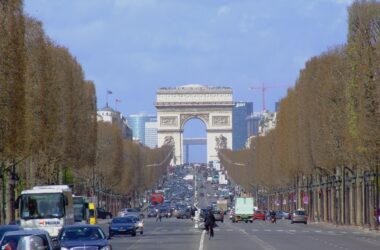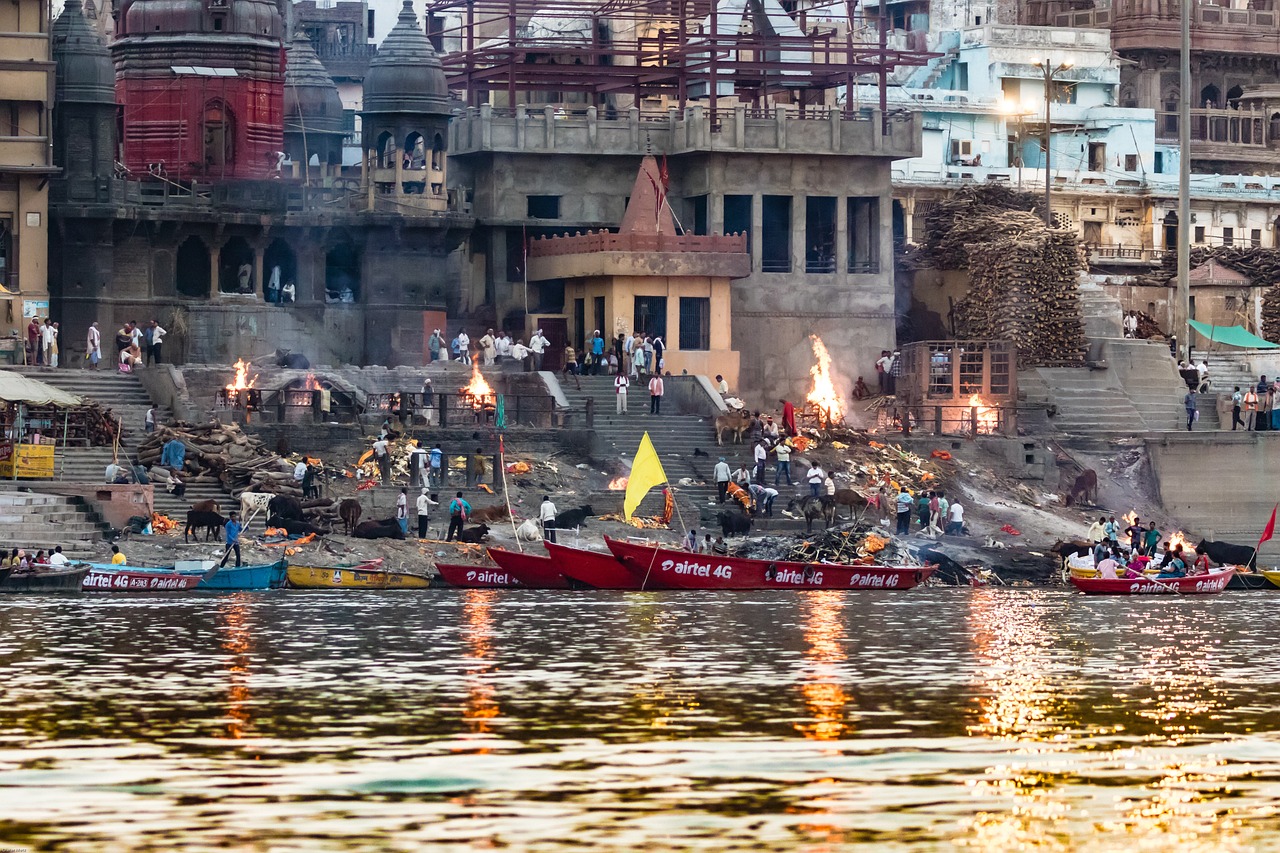Bojjannakonda is a hilltop Buddhist monastic complex located in the Visakhapatnam district of Andhra Pradesh, India. The complex is believed to have been built during the 3rd century AD and is an important archaeological site that provides insight into the rich cultural heritage of ancient India.
The name Bojjannakonda translates to “hill of the bojjas,” referring to the numerous rock-cut caves and shrines found on the hilltop. The complex is comprised of several monasteries, chaitya halls, and stupas, all of which are intricately carved and adorned with intricate sculptures and frescoes.
One of the most notable features of Bojjannakonda is the large stupa that sits at the center of the complex. The stupa is believed to have been used as a reliquary and is adorned with intricate carvings depicting scenes from the life of the Buddha.
The monasteries found at Bojjannakonda were once home to a thriving community of monks who lived and practiced Buddhism. The complex was an important center for the dissemination of Buddhist teachings and played a vital role in the spread of Buddhism throughout the region.
The site is also known for its rock-cut caves, which were used as meditation chambers by the monks. These caves are adorned with intricate carvings and frescoes depicting scenes from Buddhist mythology.
Bojjannakonda is a popular tourist destination and attracts visitors from all over the world. The site is well-preserved and provides a glimpse into the rich cultural heritage of ancient India. Visitors can explore the complex and admire the intricate carvings and frescoes while learning about the history of Buddhism in the region.
In conclusion, Bojjannakonda is an important archaeological site that provides insight into the rich cultural heritage of ancient India. The complex is comprised of several monasteries, chaitya halls, and stupas, all of which are intricately carved and adorned with intricate sculptures and frescoes. The site is a popular tourist destination and is well-preserved, providing visitors with a glimpse into the history of Buddhism in the region.
Facts About Bojjannakonda
- Bojjannakonda is located in the Visakhapatnam district of Andhra Pradesh, India.
- The complex is believed to have been built during the 3rd century AD.
- The name Bojjannakonda translates to “hill of the bojjas,” referring to the numerous rock-cut caves and shrines found on the hilltop.
- The complex is comprised of several monasteries, chaitya halls, and stupas, all of which are intricately carved and adorned with intricate sculptures and frescoes.
- One of the most notable features of Bojjannakonda is the large stupa that sits at the center of the complex.
- The stupa is believed to have been used as a reliquary and is adorned with intricate carvings depicting scenes from the life of the Buddha.
- The monasteries found at Bojjannakonda were once home to a thriving community of monks who lived and practiced Buddhism.
- The complex was an important center for the dissemination of Buddhist teachings and played a vital role in the spread of Buddhism throughout the region.
- The site is also known for its rock-cut caves, which were used as meditation chambers by the monks.
- Bojjannakonda is a popular tourist destination and attracts visitors from all over the world.
History of Bojjannakonda
Bojjannakonda, also known as the “hill of the bojjas,” is an ancient Buddhist monastic complex located in the Visakhapatnam district of Andhra Pradesh, India. The complex is believed to have been built during the 3rd century AD and is an important archaeological site that provides insight into the rich cultural heritage of ancient India.
The history of Bojjannakonda is closely tied to the spread of Buddhism in the region. The complex is believed to have been built during the rule of the Ikshvaku dynasty, a powerful dynasty that controlled the region during the 3rd century AD. The complex was an important center for the dissemination of Buddhist teachings and played a vital role in the spread of Buddhism throughout the region.
The monasteries found at Bojjannakonda were once home to a thriving community of monks who lived and practiced Buddhism. The complex was an important center for the dissemination of Buddhist teachings and played a vital role in the spread of Buddhism throughout the region. Monks from Bojjannakonda were instrumental in spreading Buddhism to other parts of India and even Southeast Asia.
The complex was also an important center of Buddhist art and architecture. The stupa found at the center of the complex is adorned with intricate carvings depicting scenes from the life of the Buddha, and the rock-cut caves are adorned with intricate carvings and frescoes depicting scenes from Buddhist mythology.
Bojjannakonda continued to be an important center of Buddhism until the decline of Buddhism in India. The complex was abandoned, and over time, it fell into ruin. The site was rediscovered in the 20th century, and since then, it has been extensively excavated and restored.
Today, Bojjannakonda is a popular tourist destination and attracts visitors from all over the world. The site is well-preserved and provides a glimpse into the rich cultural heritage of ancient India and the history of Buddhism in the region.
Best time to visit Bojjannakonda
The best time to visit Bojjannakonda is during the winter months of October to February. During this time, the weather is pleasant and comfortable, making it ideal for exploring the complex and taking in its many sights and sounds. The temperature remains cool and low humidity which makes it easy to walk around and enjoy the historical significance of the site.
During the summer months of March to May, the temperature can get quite hot and humid, making it uncomfortable to visit the complex. The monsoon season in the region can also be heavy and it may not be the best time to visit as the heavy rain may affect the visiting experience.
In addition to the weather, another factor to consider when planning a visit to Bojjannakonda is the timing of festivals and events. Many festivals and events take place at the complex throughout the year, and visiting during one of these events can be a unique and memorable experience.
In summary, the best time to visit Bojjannakonda is during the winter months of October to February, when the weather is pleasant and comfortable, making it easy to explore the complex and take in its many sights and sounds. It is also good to check for any festivals or events that may be happening at the time of your visit to add more value to your trip.
How to reach Bojjannakonda
Bojjannakonda is located in the Visakhapatnam district of Andhra Pradesh, India. The complex is situated about 15 km from the city of Visakhapatnam and can be reached by various means of transportation.
By Air: The nearest airport to Bojjannakonda is Visakhapatnam Airport, which is located about 15 km from the complex. Visitors can take a taxi or a bus from the airport to reach the site.
By Train: The nearest railway station to Bojjannakonda is Visakhapatnam Railway Station, which is located about 15 km from the complex. Visitors can take a taxi or a bus from the railway station to reach the site.
By Bus: There are several buses that run from Visakhapatnam to Bojjannakonda on a regular basis. Visitors can also hire a taxi to reach the site.
By Car: Visitors can also drive to Bojjannakonda. The complex is situated on National Highway 16. The drive is picturesque, passing through lush green fields and small villages.
Once you reach Bojjannakonda, there is ample parking space available. Visitors can explore the complex on foot, as there are many paths and steps that lead to the top of the hill. It is recommended to wear comfortable shoes and carry enough water and snacks as the area is not well developed for tourism and the hill is steep.
In conclusion, Bojjannakonda can be reached by air, train, bus, and car. The nearest airport and railway station to Bojjannakonda is Visakhapatnam Airport and Visakhapatnam Railway Station respectively. Visitors can take a taxi or a bus from the airport or railway station to reach the site. They can also drive to Bojjannakonda, which is situated on National Highway 16 and ample parking space is available.
Similar Articles
- Kambalakonda Wildlife Sanctuary
- Bheemili Beach: Exploring the Natural Beauty
- Lambasingi: The Kashmir of Andhra Pradesh
Frequently Asked Questions about Bojjannakonda
Q. What is the significance of Bojjannakonda?
A – Bojjannakonda is an important archaeological site that provides insight into the rich cultural heritage of ancient India. The complex is believed to have been built during the 3rd century AD and was an important center for the dissemination of Buddhist teachings and played a vital role in the spread of Buddhism throughout the region.
Q. How old is Bojjannakonda?
A – Bojjannakonda is believed to have been built during the 3rd century AD.
Q. What can I see at Bojjannakonda?
A – Visitors can explore the complex and admire the intricate carvings and frescoes on the monasteries, chaitya halls, and stupa, which is believed to have been used as a reliquary. There are also rock-cut caves that were used as meditation chambers by the monks.
Q. What is the best time to visit Bojjannakonda?
A – The best time to visit Bojjannakonda is during the winter months of October to February. During this time, the weather is pleasant and comfortable, making it ideal for exploring the complex.
Q. How do I reach Bojjannakonda?
A – Bojjannakonda can be reached by air, train, bus, and car. The nearest airport and railway station to Bojjannakonda is Visakhapatnam Airport and Visakhapatnam Railway Station respectively. Visitors can take a taxi or a bus from the airport or railway station to reach the site. They can also drive to Bojjannakonda, which is situated on National Highway 16 and ample parking space is available.
Q. Are there any entrance fees for visiting Bojjannakonda?
A – There is an entrance fee to visit Bojjannakonda, the fee may vary depending on the time of your visit and your nationality. It’s always better to check with the authorities before planning your trip.
Q. Are there any guided tours available at Bojjannakonda?
A – Guided tours are not readily available at Bojjannakonda, but visitors can hire a guide to take them around the complex and provide more information about the history and significance of the site.
Q. Are there any facilities available at Bojjannakonda?
A – As the site is not well developed for tourism, there are very few facilities available at Bojjannakonda. Visitors should carry enough water and snacks as the area is not well developed for tourism. It’s always a good idea to carry basic necessities like sunscreen, comfortable shoes, and a hat.









